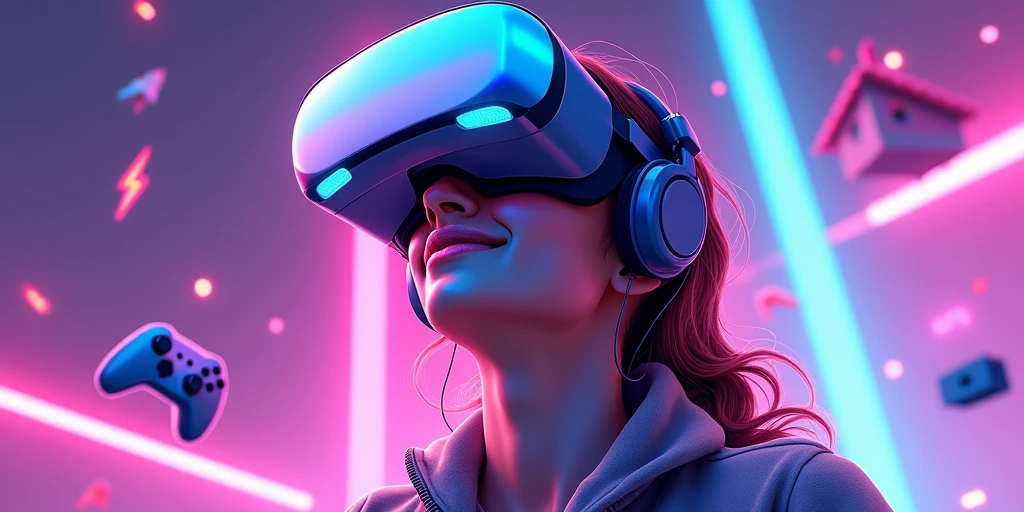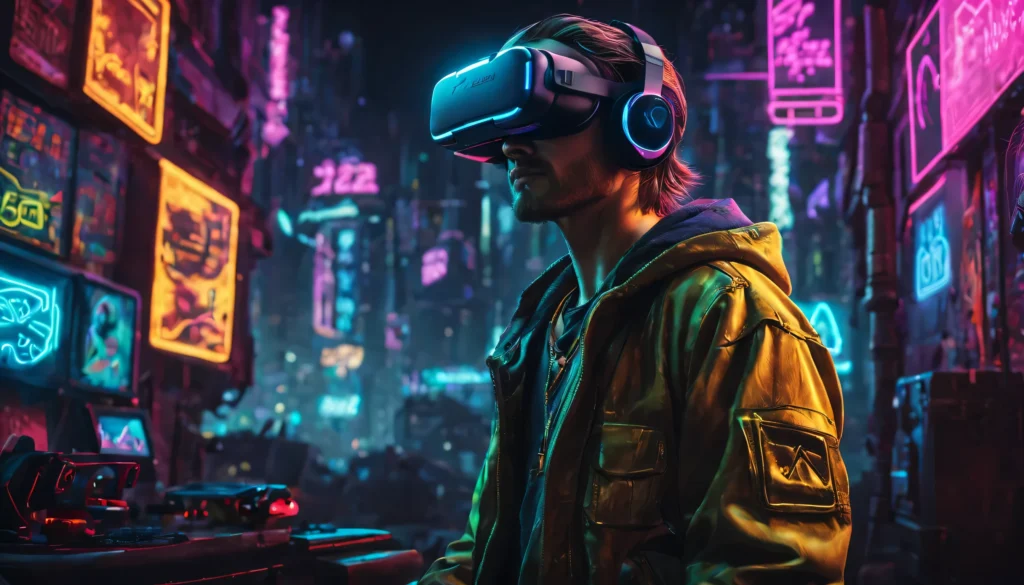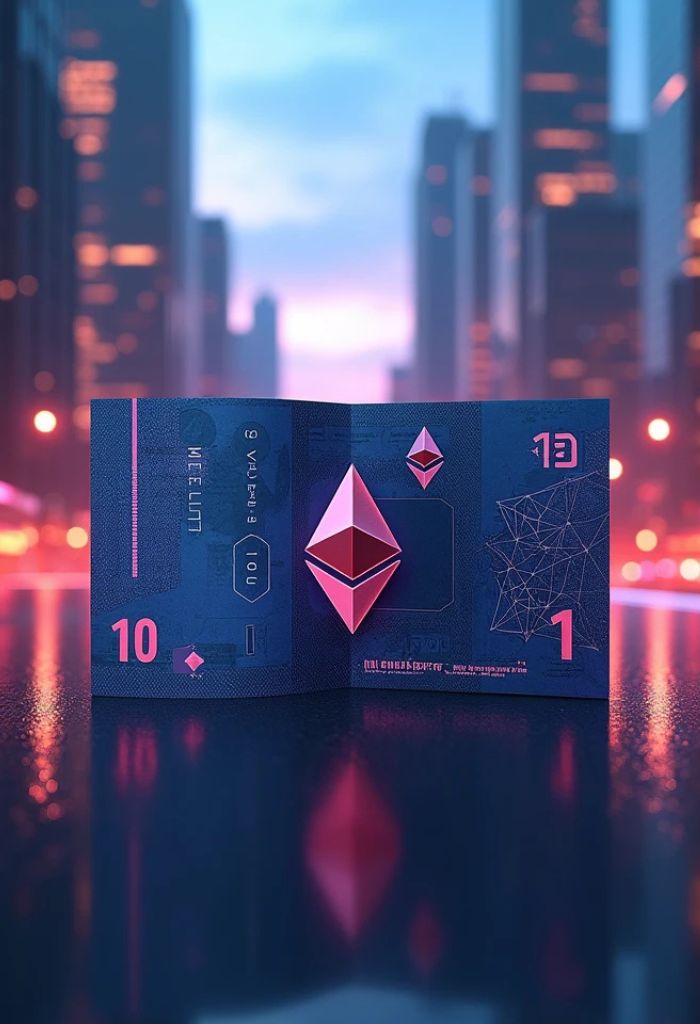What is Virtual Reality?
Virtual reality (VR) refers to a computer-generated environment that simulates a realistic, immersive experience for users. This technology allows individuals to engage with a virtual world that can mimic the physical reality or create entirely novel experiences. VR experiences can be categorized into two main types: fully immersive and non-immersive.
Fully immersive environments incorporate advanced technology to provide users with an experience that feels completely real, often utilizing specialized headsets, motion tracking, and 3D audio to enhance the illusion. Non-immersive environments, on the other hand, enable interaction with virtual elements through screens or mobile devices without the surrounding sense of immersion.
The fundamental components of VR technology include hardware and software designed to facilitate these engaging experiences. VR headsets, such as the Oculus Rift or HTC Vive, are crucial for creating an immersive environment. These headsets typically feature high-resolution displays and sensors that track the user’s head movements, allowing for a 360-degree view of the virtual space. Additionally, motion sensors and controllers play significant roles by enabling users to interact with the virtual environment, providing feedback that enhances the sense of presence.
The evolution of virtual reality dates back to the mid-20th century, with the earliest concepts appearing in the 1960s. Initial developments focused on creating basic simulations, but technological advancements over the years have led to the sophisticated VR systems available today. This evolution has been marked by significant milestones, including the introduction of affordable consumer headsets and the expansion of VR applications beyond gaming into fields such as education, healthcare, and architecture. As VR technology continues to advance, its potential for creating engaging, rich experiences in various sectors remains expansive.

Applications of Virtual Reality
Virtual reality (VR) has rapidly evolved beyond its initial roots in gaming and entertainment, finding applications across a multitude of sectors. In the realm of gaming, VR creates immersive environments that enhance user engagement and interaction. For instance, popular titles such as “Beat Saber” and “Half-Life: Alyx” showcase how VR can transform traditional gameplay into an engaging, interactive experience, allowing users to physically move and react within the digital world.
In education, VR is revolutionizing teaching methodologies. By providing visual and experiential learning, educators can create virtual classrooms where students can explore historical sites or conduct scientific experiments in safe, controlled environments. Programs like Google Expeditions enable students to take virtual field trips, thus enriching their learning experience and fostering greater retention of information.
Healthcare is another field where virtual reality is making significant strides. VR applications are being used for pain management, therapy for PTSD, and even surgical training simulations. For example, platforms like Medical Realities offer VR training modules for medical students, enabling them to practice surgical techniques in a lifelike setting, which can lead to improved outcomes and increased confidence in real-world scenarios.
In architecture and design, VR allows architects to create 3D models of their designs, enabling clients to visualize projects before they are built. This can save both time and resources, as issues can be identified and rectified during the design phase. Companies such as IrisVR provide tools that empower architects to walk through their designs, leading to more informed decisions.
Furthermore, training simulations are leveraging VR to provide realistic environments for skills development across various industries, from the military to aviation. As companies continue to embrace these technologies, the possibilities for future applications within these sectors appear boundless, promising innovative experiences and transformative outcomes.
Advantages and Challenges of Virtual Reality
Virtual reality (VR) offers several advantages across various fields, enhancing the way individuals learn, design, and treat mental health conditions. One of the most significant benefits of VR is its ability to improve learning retention. Studies indicate that immersive experiences lead to greater engagement, helping users grasp complex concepts through interactive simulations. In educational environments, VR facilitates hands-on learning, enabling learners to visualize abstract ideas and apply them in real-world scenarios.
Another prominent advantage of virtual reality is its application in design visualization. Architects and designers utilize VR to create realistic models that allow stakeholders to experience spatial environments before construction even begins. This immersive approach not only helps in identifying potential design issues but also aids in communicating ideas effectively, fostering collaboration among team members and clients. Furthermore, VR is revolutionizing therapeutic techniques in mental health. Innovative treatments such as exposure therapy for phobias and PTSD can be conducted in controlled virtual environments, providing patients with a safe space to confront their fears. The adaptable nature of VR allows therapists to customize experiences tailored to individual needs, enhancing treatment efficacy.
Despite its numerous advantages, the virtual reality industry faces several challenges. The high cost of VR equipment is a primary barrier to widespread adoption, limiting access for institutions and individuals alike. Additionally, technological limitations hinder the user experience, with issues related to graphics quality and motion sickness affecting user comfort. User accessibility is another concern, as not everyone possesses the necessary skills or technologies to engage with VR effectively.
Potential health concerns related to prolonged use also warrant attention. Users may experience eye strain, headaches, or disorientation after extensive VR sessions. Balancing the benefits and challenges of virtual reality is crucial for its sustainable growth, paving the way for further innovation and accessibility in the technology.

The Future of Virtual Reality
The landscape of virtual reality (VR) is poised for transformative advancements in the coming years. As technology evolves, we anticipate significant enhancements in hardware, enabling more immersive experiences with improved graphics and increased accessibility. Next-generation VR headsets are expected to feature higher resolutions, lighter designs, and better field-of-view, offering users more realistic and engaging environments. Furthermore, developments in haptic feedback technology will emulate touch sensations, allowing users to interact with the virtual world more naturally.
In addition to hardware advancements, software capabilities are also set to expand. The integration of artificial intelligence (AI) within VR environments can facilitate more adaptive and personalized experiences. AI can analyze user interactions to create customized content, enhancing the overall engagement. Additionally, the fusion of virtual reality and augmented reality (AR) is anticipated to redefine how we perceive our surroundings. This combination, often referred to as mixed reality (MR), will provide new opportunities in diverse fields like gaming, education, and real estate, where users can overlay digital information onto the physical world for enriched experiences.
As VR technology develops, we expect its impact to reach far beyond entertainment. Industries such as healthcare will leverage VR for simulation training, improving medical education and patient treatment protocols. Moreover, the social dynamics facilitated by VR could change how individuals interact, enabling virtual gatherings and communal experiences regardless of geographical barriers. Experts predict that the VR market will experience significant growth, driven by increasing consumer adoption and competitive innovations from tech giants, which will likely make VR tools more commonplace in everyday life.
Conclusion
Virtual reality (VR) is a groundbreaking technology that has evolved from its early roots to become a versatile tool with applications spanning multiple industries. Its ability to create immersive, engaging experiences has transformed fields such as gaming, education, healthcare, and architecture, offering new ways to learn, design, and even treat mental health.
While VR presents numerous advantages, such as improved learning retention and enhanced design visualization, it also faces challenges like high costs, accessibility issues, and potential health concerns. However, the future of VR looks promising as advancements in hardware and software, including integration with AI and augmented reality, are set to further expand its potential.
With continued innovation, VR is poised to play a significant role in shaping how we interact with digital and physical worlds, creating new possibilities for both businesses and individuals alike.
More about Virtual reality
FAQ – Virtual Reality
What is Virtual Reality (VR)?
Virtual Reality (VR) is a technology that creates an immersive, computer-generated environment where users can interact with a simulated world, often using headsets and motion controllers.
How does Virtual Reality work?
VR works by using headsets equipped with displays and sensors to track your movements and adjust your view in real-time, creating a 3D, 360-degree virtual environment that responds to your actions.
What equipment do I need for a VR experience?
To experience VR, you typically need a VR headset, motion controllers, and sometimes additional sensors or cameras. Some systems also require a compatible computer or gaming console.
What are the main types of VR headsets?
There are two main types: standalone headsets like the Oculus Quest, which don’t require a computer, and tethered headsets like the Oculus Rift or HTC Vive, which connect to a PC or console for more advanced experiences.
What can I do with Virtual Reality?
VR can be used for gaming, virtual travel, training simulations, education, healthcare, architecture, and even social interactions in virtual environments.
Is VR safe to use?
VR is generally safe, but prolonged use can lead to eye strain, headaches, or motion sickness. It’s recommended to take regular breaks during extended sessions.
Can VR help with education and training?
Yes, VR is increasingly used in education for immersive learning experiences, such as virtual field trips or interactive lessons. It’s also used in professional training, like medical simulations and pilot training.
What is the difference between VR, AR, and MR?
VR immerses you in a fully virtual world, AR (Augmented Reality) overlays digital content onto the real world, and MR (Mixed Reality) blends both virtual and real-world elements, allowing them to interact.
How much does a VR system cost?
The cost of a Virtual Reality system varies. Standalone headsets range from $300 to $500, while high-end tethered systems can cost $1,000 or more, depending on the hardware and accessories.
What are the future trends in Virtual Reality?
Future trends include lighter, more affordable headsets, better graphics, haptic feedback technology, and integration with AI for personalized experiences. VR is also expected to play a bigger role in industries beyond entertainment, such as healthcare, education, and social interaction.



